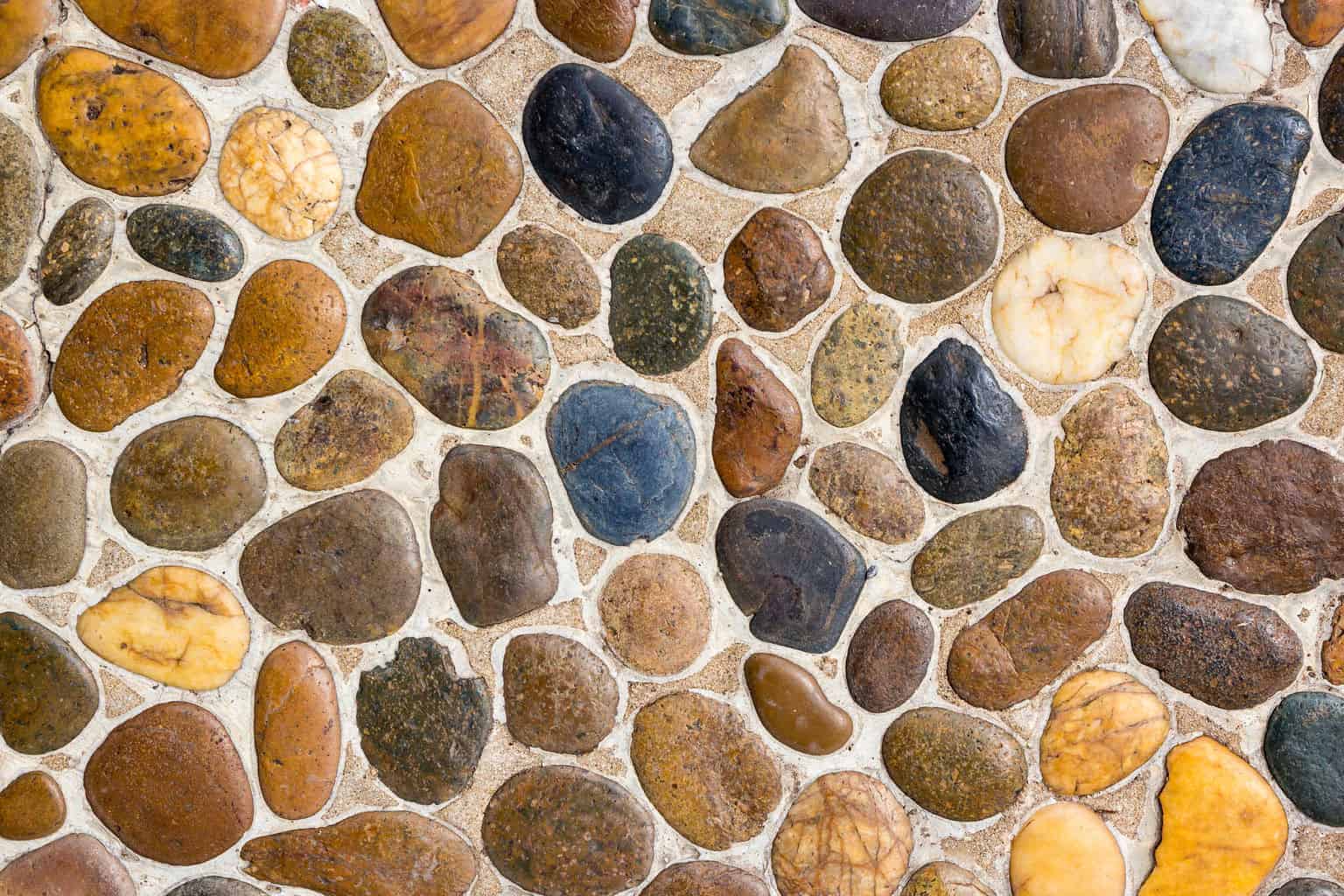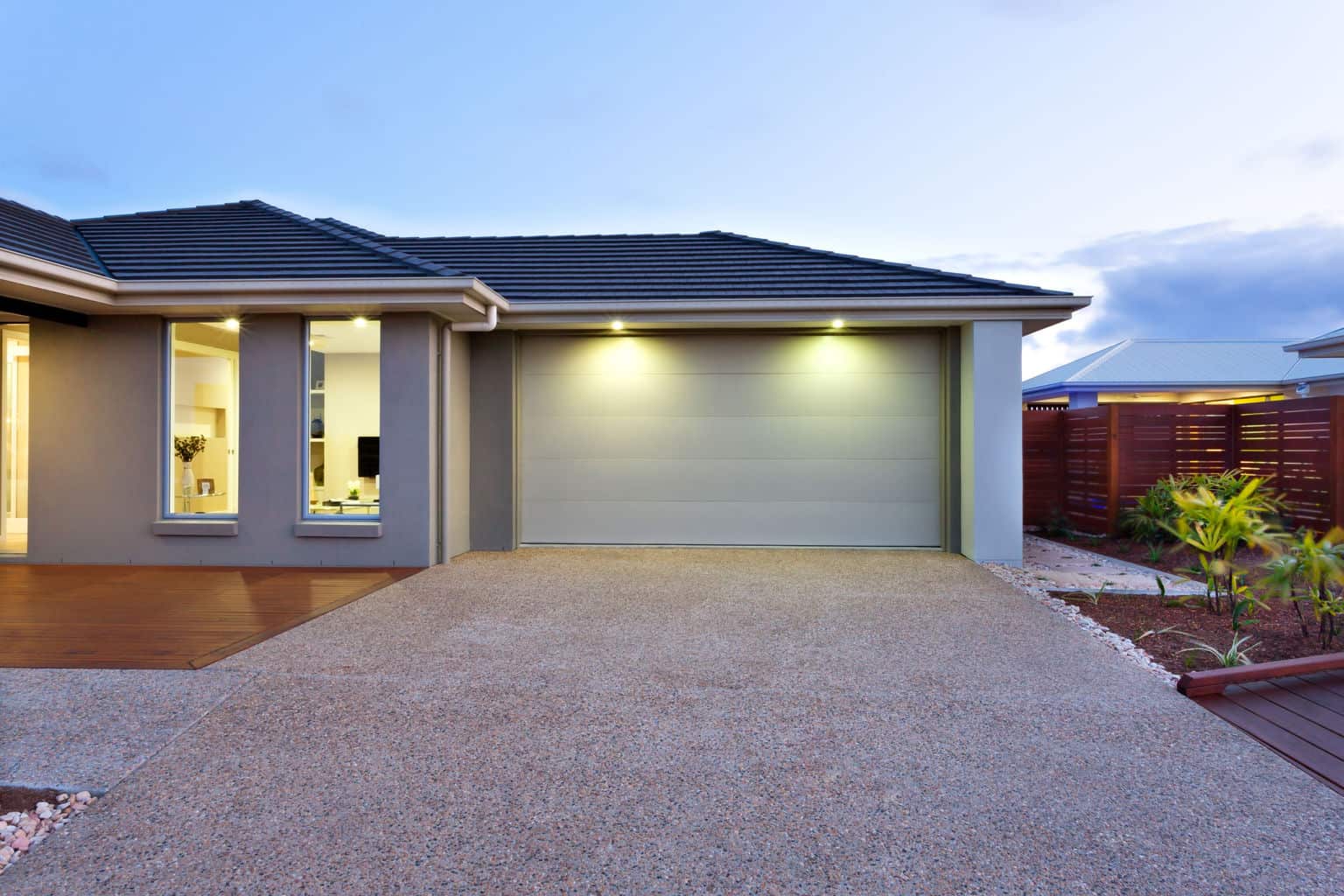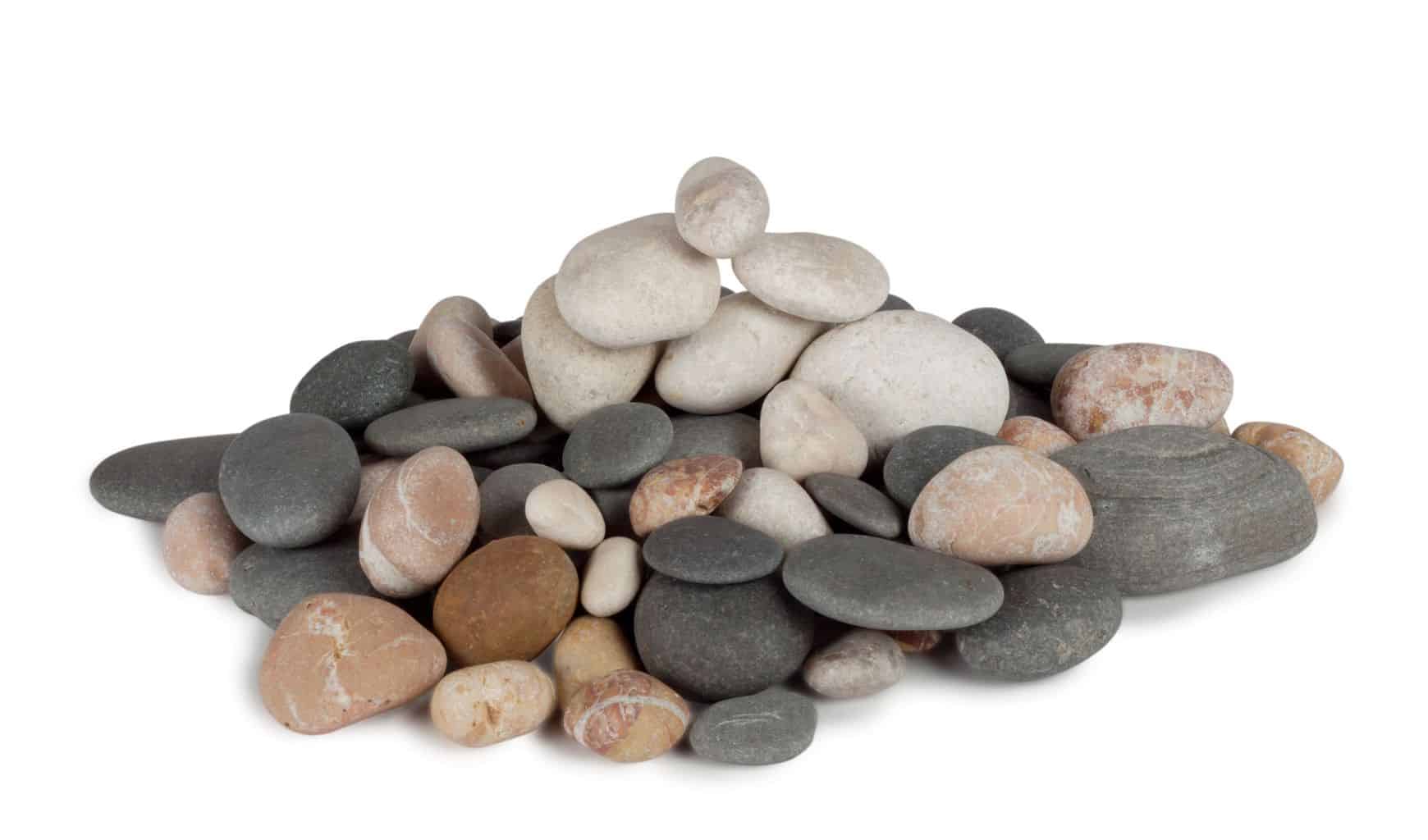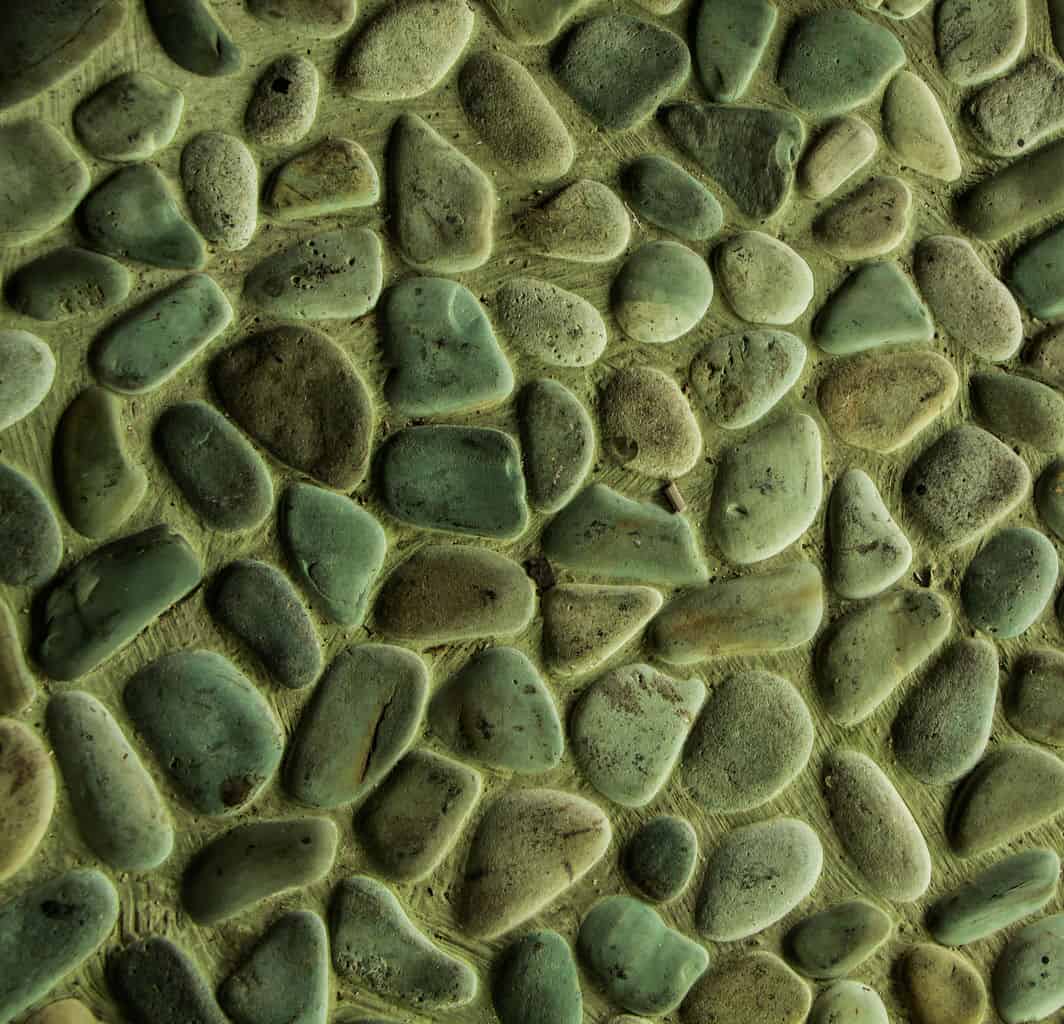Epoxy stone flooring is a good option for covering a damaged floor, for replacing an existing floor, or as a brand new floor, especially in an area that tends to be flooded. An epoxy stone floor can take on a wide range of looks, letting you create just the right look for your situation. If you are considering replacing or covering damaged flooring in a basement, a garage, on a patio, as a driveway or as a walkway, and you like the look of natural stone, you should strongly consider the epoxy stone flooring. If the look and functionality don’t convince you of the merit of this natural stone, cost will definitely convince you!

Epoxy Stone Flooring, Rising Dramatically in Popularity
For many, the use of natural epoxy stone flooring is a means for hiding flooring flaws. Recently, however, it has been gaining popularity as a flooring choice all on its own due to the simple beauty it offers. Epoxy is also known as epoxy resin flooring. Basically, small natural stones are blended with a special, water resistant epoxy. The epoxy provides the adhesion that will not only hold the stones together, but will also adhere to whatever flooring it is laid over, including concrete, and will fill any cracks or dents in the process.
There are many advantages to using this product.
- Durability
- Ease of Installation and Care
- Water Resistance
There are also disadvantages to using epoxy flooring.
- For some it can cause eye irritants,
- There is a relatively long period of time before you can start using the floor after the flooring has been done.
People have started realizing the benefits of using epoxy stone flooring for their whole building rather than using it for covering up some patches. Since it is made from resins and other chemicals, some people do not prefer it. But there are safe disposal methods available for such chemicals and therefore, such concerns should not prevent you from trying it out.

A Natural Stone Flooring at a Great Price Point
The product is installed by covering an existing floor, typically concrete. This means you are able to completely hide the underlying floor, whether that is damaged concrete or a plywood subfloor. For many, the number one benefit of using this flooring is that you do not have to remove the current flooring in order to lay the epoxy stone flooring. Consider the huge savings you will see from not having to pay to remove or spend the time your own removing the current flooring!
Additionally, installing epoxy stone flooring solves any complications that may arise from removing the flooring, and the installation process is simple, quick and inexpensive.
Being a resin, epoxy stone flooring has a very long life and hence promises you peace of mind. In addition to providing you with peace of mind, this durable flooring option will save you money in the long term, as the maintenance is practically nil.
And finally, the cost of the epoxy stone flooring itself is less than even the cost of laying concrete. The epoxy resin is very inexpensive, and the natural stones used vary in price, so your total cost will be based entirely on the stone you choose to use.
Epoxy Stone Flooring Installation Process
When you choose to use an epoxy stone floor, you will be amazed at the installation process. That is because the epoxy itself starts out as a liquid, basically just a small bucket of glue that will be mixed with the stones of your choice and then spread out and allowed to harden as flooring. If you would like to watch the installation process, check out the video below.
The Installation Steps are As Follows:
- Preparation: Preparation for installing an epoxy stone flooring is minimal, but will depend on the area where the flooring is being laid. The area on which you will be laying this flooring will need to be fully cleaned, first.
- Priming: A coat of primer will need to be added to the existing concrete floor or the plywood subfloor where the epoxy stone flooring will be laid in order to protect it. There are plenty of primer options out there available at any major retailer, like the popular brand name Kilz, that offer sealing and waterproofing, but you will want to check with the epoxy manufacturer’s recommendations. Always follow the instructions on the primer and allow for plenty of time for the primer to dry completely (can take as long as a week) before laying the epoxy, if you want the subfloor to be completely waterproofed.
- Mix the Epoxy and Stones: Now, there are several products that can be purchased here to help create the stone look. One of the common ways of doing this is through the purchase of an epoxy that has the ability to create a pebble finish. Other options include aggregate and resin floorings. The epoxy can be mixed with many other elements to create the look that you are after. There is never a dearth of options as far as design and pattern is concerned. There are UV or weatherproof epoxies that you can use if the stone flooring is to be laid outside. You will want to mix the epoxy you have chosen to use with the natural stones until the pebbles are completely coated in the epoxy. If you miss any patches, the stones will not be able to adhere to the floor.
- Apply the Epoxy Resin and Stones: After the primer coat is completely dry, the epoxy can be applied to the subfloor. Pour the resin in batches and spread the stones evenly across the floor. You will want to use a trowel, like this one, to ensure there are no uneven patches, holes that will need to be patched, or places where stones are sticking up. This is an easy process, but can be time consuming and you will want to pay attention to your work so that the final product is something you will be happy with.
- Allow the Flooring to Dry: Once the flooring material is applied, it will take twelve hours to set if indoors and a full 24 hours if outdoors. During that time the area cannot be used at all.
- Finish and Seal the Epoxy Stone Flooring: Sweep or blow off any extra or loose pebbles, and roll a top coat of the epoxy over the flooring. Allow this topcoat to dry completely before using the flooring.

In 24 hours, you can truly begin to see the strength of the product. But, it will take a full week to gain its complete strength. You can use the area again after 12 hours’ worth of curing, however, for best results, it is highly recommended that you wait till the floor is completely set before you start using it. This causes inconvenience to people who have no alternative but to use the floor for daily use, but allowing the floor 1-2 full days to dry (especially in areas where there is a higher amount of moisture in the air), you will get more use from the flooring in the long run.
The Advantages of an Epoxy Stone Floor
There are numerous advantages of epoxy stone floor. First, as you can see, the installation of this type of flooring is quite simple. Secondly, the long-term care of an epoxy stone floor is just as simple. In fact, there are fewer restrictions on the products and methods that you use with epoxy than any other type of stone flooring. On top of that, an epoxy stone floor is one of the strongest flooring solutions out there. It is commonly used in industrial settings where chemicals, fires and other accidents can happen, because it will withstand the damage. Also, it will also provide for fire resistance. Once the epoxy is set, you can start using the floor straightaway.

There is no regular maintenance, refinishing or polishing!
Additionally, as the epoxy begins as a liquid that spreads out across the subflooring and then hardens, it is not porous and moisture does not penetrate it. As a result, there is very little chance of staining and there is no risk of water damage. In the first products to come out and to be used in the 1950s, a yellowish, amber staining happened over the course of time and sun exposure. This was due in part to the fact that this early product was not UV protected. Many epoxy products today are formulated to handle UV rays, however, and if you are installing the epoxy stone flooring somewhere that will receive sun exposure, you should ensure that the product you purchase is UV protected.
If any damage does occur, such as chipping or stones breaking loose, you can purchase a simple epoxy repair kit, such as this one on Amazon, to repair the damaged places.

The Negatives of Epoxy Stone Flooring
Epoxy stone flooring does have a longer installation process due to the time required for the floors to cure. During this time, it is really recommended that the floor is not used at all. This can be a negative for some people, especially if it is a major inconvenience to avoid the flooring in the area where you are applying the natural stone epoxy flooring for several days.
Additionally, the chemicals used in the epoxy do bother some individuals. However, if the area is well ventilated during installation, the long-term use of an epoxy flooring should not cause any issues. This product does not break down for a very long time, so chemicals being released should not be an issue, as that process is incredibly slow. However, the fact that the resin does not break down over time does mean the environmental impact of an epoxy flooring is a negative that should be considered.
A Natural Stone Epoxy Flooring: Cost Effective, Attractive and Practical
Overall, the benefits of epoxy stone flooring are numerous, and it’s understandable that this type of flooring is such a popular choice. You often see epoxy stone floors in industrial settings due to its strength and long-term durability. A natural stone epoxy flooring will look amazing in any home’s patio, garage, basement, or outdoor area, and the price is hard to beat. And, as the selection of the type of natural stones that can be used in such a flooring vary significantly, your flooring will have a visually appealing uniqueness original to your floor alone.

Could you tell me what the average price for a small stone epoxy floor with installation of a garage that is 21′ X 21′?
It will run you between $4-7 per square foot.
If you have any more questions about price consider reading this article>http://www.concreteideas.com/what_is_the_price_or_cost_of_decorative_concrete_or_cement_finishes
do you sell the stone that you mix with the epoxy if so what colors do you have.i want to start my own bussiness.
I love this concept…can this be installed over wood?
Thank You
In general I believe it can be used over wood. It never hurts to verify that with the epoxy manufacturer. It can be a very cool-looking floor.
wood expands and contracts,therefore the epoxy when hard will have a tendancy to crack with the movement of the wood.You can put down the 1/4in. hardybacker down first and that should help.Also I am looking for a supplier other than “Nature Stone”,if you have any info. please let me know.
Yes. Please! A distributor for a 100% resin product in this vein would be greatly appreciated. The laborers sent in by any of these companies are not any more capable of laying this floor than I am. Honestly, I don’t like the look of this epoxy/stone deal, but my basement floor is so chewed, I don’t know of any other options that will work. Anybody?
I just met a representative of NeoGard, a company that makes low VOC flooring products. One they make that fits your project needs is an epoxy product you don’t have to put stones into — you can choose color flakes to create the look you want. I think it will cover the chewed up floor nicely.
Hello, i manufacture a 100% solids Polyaspatic product. It has a 4 hour cure time, does not yellow or chalk, and has zero VOC’s. My background is laying down stone floors, but for the last 3 years i have been doing concrete coatings with the Aspartics. Take a look at my website. http://www.Advacoat.com
I’m very interested in applying an epoxy stone finish to my existing concrete porch. I am 60 miles south of Pittsburgh, Pa.Local Pitts. dealer wants guaranteed a $1500.00 minimum. Can’t seem to locate a closer dealer. Morgantown, WV is close to me. Anyone know of dealer in my area?
Hi Deborah! Check out these sites – maybe one of these will help:
http://pittsburgh.homeconnections.com/tasklocal.Concrete-Floor-Coating-Apply.Pittsburgh.Pennsylvania.46357.html
http://www.alleghenyinstallations.com/
http://www.flexbonflooring.com/
http://www.thomasnet.com/western-pennsylvania/floor-coatings-15751001-1.html
http://www.neogard.com/W71.htm
You might also want to call around locally to contractors, other flooring people and see if they know of any that are closer than Pittsburgh.
Drop back by here and let me know if you’ve had any luck. If not, we can aways brainstorm some more!
Thanks Flooring Lady, but no luck. No Pittsburgh dealer is willing to come this far south and no local dealers. One contractor that I talked to said that this finish is not a good idea for western PA weather. Will need to find a different solution. The porch is 6′ by 28′, with two cracks. Really do not want to use outdoor carpeting.I guess I have several months of nice weather to look around before I make a decision.
Hello Deborah,
There are other epoxy approaches too — like just a plain
finish.
You might want to wander over to http://www.neogard.com/ and look around there – looks like to me that they should be able to help you. This might just take some researching, asking questions and learning on your end so that maybe you can do it yourself. You can call Neogard too and talk to somebody there — I’m confident that you can find a solution — even for weather in western PA.
can this product be used outdoors over a concrete swimming pool apron? right now, as i had foolishly painted the concrete, it is flaking off in large pieces and looks terrible.
Hi Gail,
I think it would probably be a larger project than just covering over what’s already there. It would adhere best if you were strip the old paint, then sealing the concrete with a sealer recommended for outdoor use and then trying the epoxy finish, and sealing that too with something that would be recommended by the manufacturer of the epoxy finish that you choose.
We cant find anyone that carries the epoxy Stone flooring. Where I can I get this at?
Hi Stacy,
I don’t know where you are, so I really can’t help. I would suggest using a search engine (Google is my favorite!) and doing a search – you’ll probably come up with some manufacturers and they often have a link to find distributors that will hopefully be close to you.
You could also try searching and inputing the city & state for where you are or what is close to you.
Looking for something to cover a deck (concrete and tile) has some crackes it and water leaks into garage. Will epoxy stone keep water from leaking through it?
Hi Rick,
I’d love to help you, but I don’t think I understand the whole situation. How is the deck situated compared to the garage. Just confused….. does the water leak through the deck and into the garage? Is the deck above the garage? Is the deck situated alongside the garage and maybe their on a slope?
I’m very interested in having epoxy stone flooring in my basement, but the samples I’ve seen are very rough — lots of little pebbles with just enough epoxy to hold them together. I was looking for a thicker coating over top of the pebbles, creating a smoother finish. Do you know of a product like that?